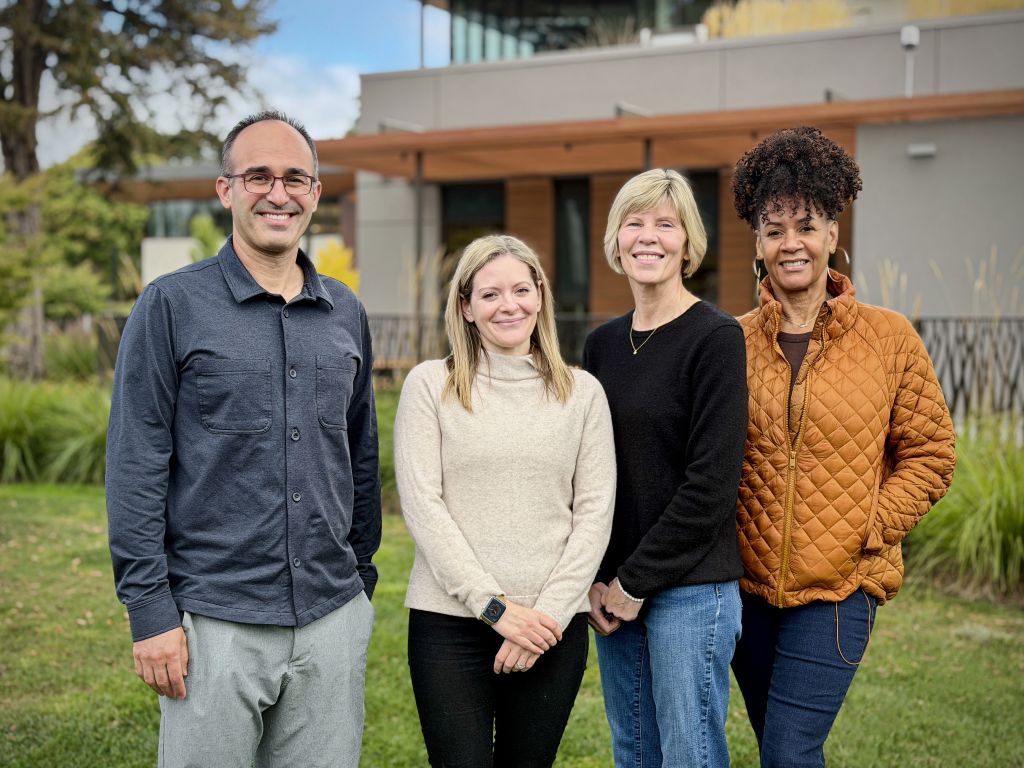San Bruno
Crestmoor
Crestmoor, with its curving residential streets and of-the-era mid-century homes (the majority of single-family homes in Crestmoor were built between 1950 and 1970), was this philosophy writ large. It was designed as a dream neighborhood for middle-class Americans looking to escape the city but still remain within easy commuting distance. With this as its goal, there is no way to describe Crestmoor as anything other than a success.
Perhaps more than any other Peninsula city, San Bruno aimed its post-World War II expansion at becoming a classic mid-century suburb. Crestmoor, with its curving residential streets and of-the-era mid-century homes (the majority of single-family homes in Crestmoor were built between 1950 and 1970), was this philosophy writ large. It was designed as a dream neighborhood for middle-class Americans looking to escape the city but still remain within easy commuting distance. With this as its goal, there is no way to describe Crestmoor as anything other than a success.
Crestmoor is quiet and removed, its often steep streets lined with mostly three-bedroom homes (they outnumber two and four bedroom homes by a ratio of two-to-one), some boasting panoramic views of San Francisco Bay. Homes come in a variety of styles, leaning heavily on California Mid-Century but with other, more traditional styles represented. It is exceedingly family-friendly, not only because of its access to the wilds of Crestmoor Canyon but also because its residents who, on average, have lived in their homes much longer than other San Bruno residents, have established traditions of community and neighborliness.
The changes coming to Crestmoor are both acute and inevitable. Acute because of new homes that continue to go up on Claremont, Earl and Glenview Drives to replace the ones lost in 2010; inevitable because the local population is aging, moving on, bringing a slew of new residents to the neighborhood. Those residents, when they arrive, will find that Crestmoor homes have appreciated many times over since their original owners purchased them. Crestmoor real estate has recently been very popular, driving prices up and well over the $1 million mark. Single-family homes sold this year have ranged in price from $1.088 to $1.65 million, with the majority closing escrow between $1.15 and $1.45 million, and sales have been brisk. Regardless of what change and Mother Nature’s best efforts can do, Crestmoor remains -- more so than ever -- a desirable place to live
-
$1.7M
Median Sale Price
-
$1.66M
Average Sale Price
Pricing data based on single-family homes
On this page
Crestmoor
Stats & Trends
2022 Price Data
Number of Sales
29
sales
Percent List Price Received
110.3%
Median Sales Price
$1.7M
Average Sales Price
$1.66M
Lowest Sales Price
$1.01M
Highest Sales Price
$2.1M
Crestmoor on the Map
Schools & History
Schools
The history of schools in Crestmoor is one of demographic ups and downs. Almost 60 years ago, the neighborhood’s rapid growth led to the opening of two schools, Crestmoor Elementary School (1957) and Crestmoor High School (1962). Both are now gone, having closed in 2014 and 1980, respectively, and were replaced by the independent Stratford School and Peninsula Alternative High School. Today, Crestmoor students attend John Muir Elementary School, with with 359 students, a Great Schools rating of 8 out of 10 and a recent API of 897, or Rollingwood Elementary, which has a Great School rating of 6 out of 10 and 249 students. Like all students in San Bruno, they then move onto Parkside Intermediate School, which has 516 students in grades 6 through 8, a Great Schools rating of 7 out of 10 and an API of 785, then finish at Capuchino High School (API 796) or Peninsula Alternative High School.
History
Crestmoor’s history is not unusual: once an Ohlone settlement, it was later a little corner of Jose Antonio Sanchez’s Rancho Buri Buri and then used for vegetable farming. Development of the neighborhood began in the early 1950s by George Williams, who’d had a hand in developing Mills Park in the 1940s. Williams’ Consolidated Land Company priced the homes in the new development between $8,000 and $15,000. As of September 8, 2010, many of those homes still had their original owners.
The following day, at 6:11 PM, an underground natural gas line exploded, shaking stable, close-knit Crestmoor to its core. For two hours afterward, confusion reigned. Some thought a commercial airliner had crashed into the neighborhood. When the smoke cleared, the epicenter of the blast, at Earl and Glenview Drives, looked like a bombed-out war zone. More than three dozen homes had been destroyed and eight residents killed. It has taken the better part of five years to begin rebuilding. As of mid-September, 2015, 22 homes had been rebuilt, with two in progress. Another 10 lots had been sold to a residential developer and were in the planning stages.

Contact Raziel to find the right property for you.
With a team of experts guiding you every step of the way, our extensive knowledge and experience will ensure you have the best home buying experience possible.



